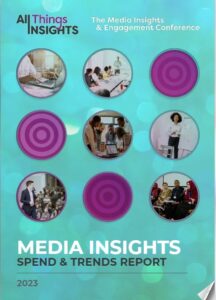Measuring Consumer Sentiment & Spending
Some consumer trends in the market are still prevalent from the period of COVID, crystallizing with such themes as personal safety and value-seeking shopping. Yet other trends are just coming to the forefront as consumers grapple with tariffs and inflation and how they impact the market. Consumer confidence often varies, and the economic indicators show mixed signals.
Some trends have remained relatively stable over the last few years. Consumers are increasingly prioritizing omnichannel experiences, demanding personalized interactions, and seeking value in their purchases while also showing a growing interest in sustainability and health & wellness. Additionally, brand loyalty is waning, and privacy and security are becoming paramount concerns as AI continues to trend. Consumers, it seems, are responding to the latest crisis and disruption, whether that be in health care, political uncertainty or the economy’s state of flux.
One report that looks to pinpoint the current state of consumer trends is McKinsey’s “State of the Consumer 2025: When disruption becomes permanent.” The consulting firm asserts that crisis-era habits seem to be lingering. Remote work, digital connectivity, and solo activities remain the norm even though there is no more of a “lockdown” atmosphere. This creates a mixed picture of consumers going into the second half of the decade, with a dose of uncertainty ahead.
McKinsey observes, “It’s not that today’s consumers are irrational; it’s that the old frameworks used to decipher their behavior no longer apply. What once seemed like short-term adaptations born of the COVID-19 pandemic have solidified into lasting behavioral change. As the world heads into the second half of the decade, consumer-facing companies confront new challenges, but being able to understand the motivations of an unpredictable consumer can help them stay agile and relevant.”
Some of McKinsey’s top trends from its consumer survey include:
- People are spending more time alone and online: The behaviors that consumers adopted for coping with life under COVID-19 lockdown—namely, a reliance on digital connectivity and at-home activities—are now permanent parts of their daily lives. Speed will remain key when it comes to delivery and e-commerce.
- Digital channels win users but not their trust: Consumers say that social media is their least trusted source when making buying decisions, yet it’s where they interact with family and friends, who serve as their most trusted sources. The challenge for brands is to maintain authentic yet personalized messaging across platforms.
- Gen Z grows up and spends: Understanding Gen Z consumers and their spending behavior presents one of the single greatest opportunities for consumer brands and retailers. Businesses that best understand where Gen Z is prioritizing spending will be positioned for success.
- Consumers lean local over global: Over the past five years, we have seen disruptor consumer brands encroach on global, multinational brands. That trend has evolved in 2025: As new global trade agreements take shape and disruption continues, consumers are signaling the importance of buying local from their own markets.
- Consumers solve the value equation in new ways: Rising prices continue to be the number one cause for concern among consumers. As a result, consumers are trading down, sometimes in unexpected ways and across categories rather than only within them.
Zeroing In on Consumer Behavior Trends
During TMRE 2025, Ethan Chernofsky, CMO at Placer.ai, will examine consumer behavior trends with the session, “2025 Consumer Behavior Trends – A Data Driven Perspective.”
In this session, we will leverage the latest location analytics to break down the most important trends in consumer behavior in the physical world. From the effects of tariffs on consumer visitation to significant shifts in shopping patterns, we will break down the numbers to identify the trends, their potential impact and the ripples that could disrupt other industries.
Building a 360-Degree View of the Consumer
While consumers can be unpredictable, and the market uncertain, the ability to forecast consumer behaviors remains a paramount concern for today’s corporate enterprises as they gear up for brand and market growth. Consumer insights professionals can be at the forefront of their companies’ efforts to identify consumer trends for their respective markets, whether that’s themes such as speed, convenience, a geopolitical or economic shift, value shopping or any other number of market movers.
McKinsey gives several recommendations at the conclusion of its consumer trends report. One of the most significant is the importance of insights: Get even closer to the consumer.
The consulting firm observes, “Consumer sentiment is no longer neatly aligned with consumer spending, and simple methods for predicting consumer behavior are insufficient. Companies need to build a 360-degree view of their consumers that enables proactive decision-making. This means leveraging new capabilities, such as AI-powered social-listening tools, and ensuring that the organization has granular behavioral data from its owned websites or stores. For consumer goods companies with limited first-party data, building capabilities to gather consumer insights and third-party data beyond their subsector is key.”
Yes, consumers can be unpredictable and identifying trends is an inexact science. Yet, leveraging both insights, predictive and prescriptive analytics can help the market researcher pinpoint their target consumer. McKinsey notes, “Together, these analytics form a strong insight and analytics backbone that allows consumer players to unlock the power of personalization and targeted marketing.”
Video: “Must Watch Consumer Trends 2025 | Data on Stage,” courtesy of Statista.
Contributor
-

Matthew Kramer is the Digital Editor for All Things Insights & All Things Innovation. He has over 20 years of experience working in publishing and media companies, on a variety of business-to-business publications, websites and trade shows.
View all posts















































































































































































































































